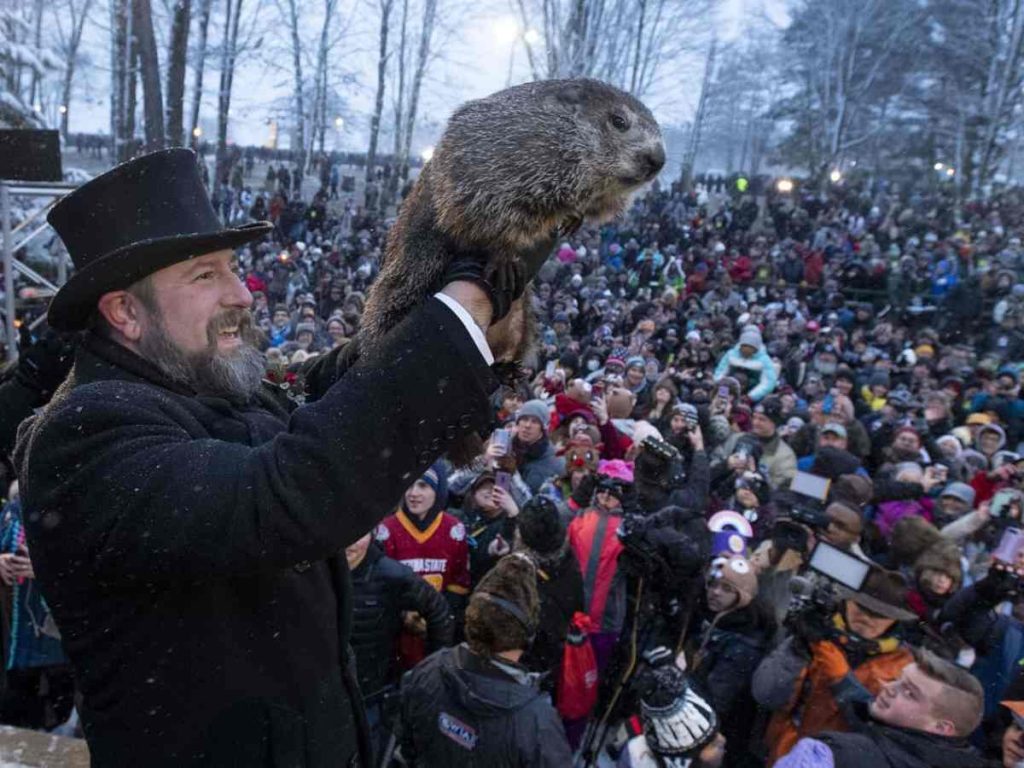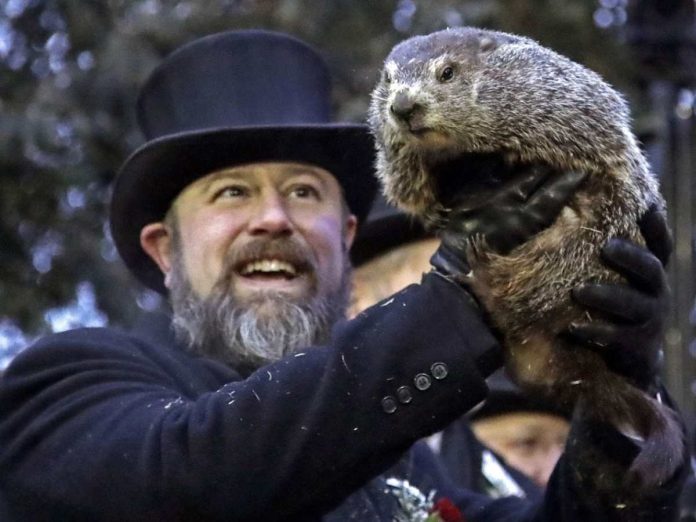The time of year is finally here. February 2 is marked as Groundhog Day. The end of January is exciting for the people of Punxsutawney, Pennsylvania, for a specific groundhog who resides there. According to American folklore, February 2nd is the day designated for the groundhog to awake from its hibernation and predict the weather. This tradition of Groundhog Day celebration still takes place in Punxsutawney.
This superstitious tradition is viral and attracts tens and thousands of people, more than the population of the town, and millions of spectators on media. Although Punxsutawney’s is the most famous for this tradition, there are several other cities that have their own chiromancer rodents. These cities include New York, Washington, Georgia, and D.C. The holiday is also celebrated in Canada, Ontario, Nova Scotia, and Quebec each in possession of cherished hometown rodents.
Read Also: Greta Thunberg Net Worth, Activism, Parents, Boyfriend, House, And More
What Is The Significance Of Groundhog Day?

The Groundhog Day ceremony is held at Punxsutawney in western Pennsylvania, focuses on a semi-mythical groundhog named “Punxsutawney Phil”. This weather lore depends on the groundhog which emerges from its hibernation on the day of February 2 and sees its shadow in the clear weather. If it will retreat to its den and winter will continue for more than six weeks and if the shadow is not visible because of cloudiness, then spring will arrive early.
Groundhog Day festivities are organized by the prestigious Punxsutawney Groundhog Club Inner Circle. The members of this club wear top hats and handsome tuxedos for the occasion. There are two scrolls prepared, for the probability of a short or prolonged winter and then the groundhog, “Punxsutawney Phil,” notifies the president of the Groundhog Club of which scroll to read. This weather lore was initially traced back to a German-speaking region where the badger is the forecasting animal, instead of the groundhog. This appears to be an enriched version of the fable that clear weather on the Christian festival of Candlemas forebodes a prolonged winter.
Read Also: Amanda Seyfried Says She Is Really Grossed Out By Male Reaction To Her “Mean Girls” Scene
History Of Groundhog Day

Since many of the American ancestors were farmers, they were hugely dependent on the weather. Thus, the ritual of observing rodents to forecast the weather is traced back to northern and western Europe. And since February 2nd lies halfway in between the winter solstice and the spring equinox, is marked by feast days in both pagan and Christian traditions which are Imbolc and Candlemas. Hence, if the weather on February 2 was rainy which would result in the groundhog’s shadow being difficult to view then winter would end early. But if the weather was sunny, and the shadow was clearly visible then winter would continue.
Later the German settlers introduce the tradition of foretelling forest creatures. But in the year 1886, the editor of “The Punxsutawney Spirit” newspaper had anointed the day as “Groundhog Day,” and since then the name remains. Little did the early German settlers know when they incorporated this Native tradition with their own tradition, that the celebration would gain fame and even continue in the 21st century. This longstanding history, which has also become an intrusive part of Punxsutawney culture has been preserved and passed on.
Read Also: ‘Mandalorian’ Director Shares Some Exciting Updates About Season 3 Story

